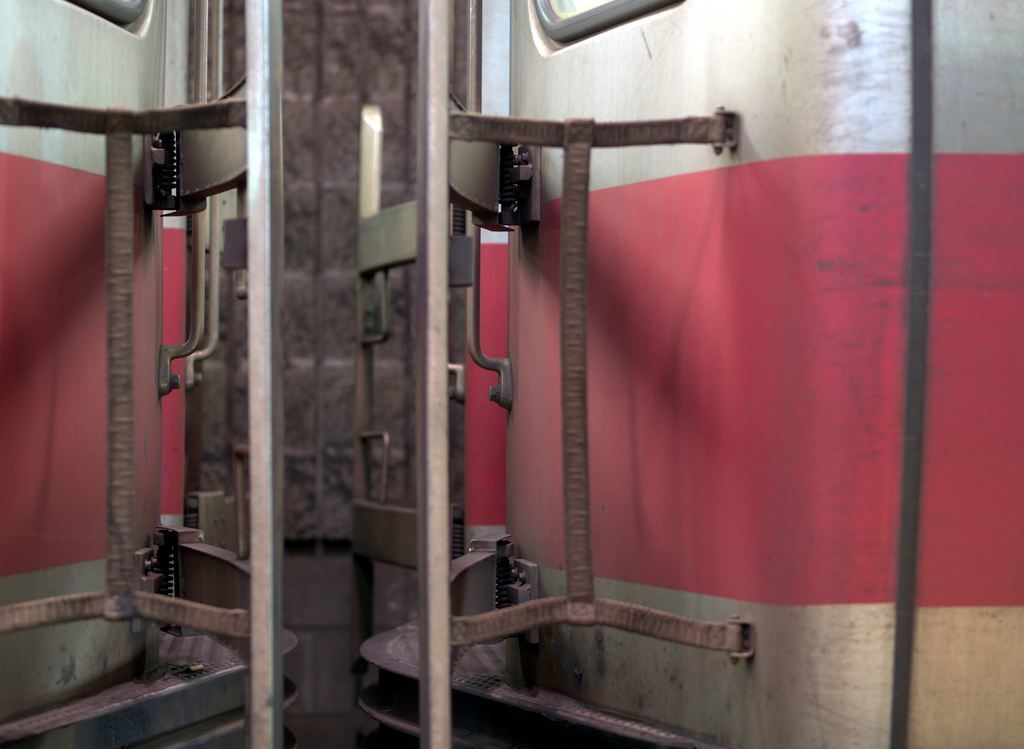
UPDATE: MBTA spokesperson Joe Pesaturo told BostInno the following:
The propulsion system that caused the subway car to ‘behave’ as if the train was still moving. Because of this, the train’s control system did not allow the doors to open automatically. This safety feature is intentionally designed into the cars. It appears a propulsion system failure caused the wheels to ‘spin’ on two axles of the car, creating the smoke seen on the platform.
Earlier: MBTA Red Line trains experienced severe delays Thursday morning because of what the transit authority described as a power problem. More specifically, a propulsion failure occurred which caused a subsequent burst of smoke.
“The precise cause remains under investigation,” said MBTA spokesperson Joe Pesaturo.
Gil Propp, a transit historian and civil engineering student at McGill University in Montreal with a fascination for Boston’s subway system, told BostInno that it could’ve been caused by “the freezing of the air brake hoses, a known issue in cold weather that can tie up propulsion systems and cause trains to stall,” though that’s not the only possible cause.
Naturally, passengers inside the train cars and bystanders on the platform became unnerved and proceeded to punch and kick out train car windows to provide an exit.
“There was no emergency. There was no danger and no one was injured by the failure in the propulsion system,” added Pesaturo. “The MBTA was opening the doors when some people kicked out windows. There was no reason for this to happen. It’s unclear why some acted in such a manner.”
People close to the incident were less than thrilled with the MBTA’s seemingly lack of understanding.
@NickDeLuca1 @BostInno it’s really easy for MBTA officials to claim people overreacted when they weren’t there.
— Allison Wilhelm (@WilhelmSourcer) January 29, 2015
@NickDeLuca1 Unbelievable…The T needs to hire some competent employees and update their equipment #mbta #mbtafail #mbtaproblems — Devon McGettrick (@dmcgettrick) January 29, 2015
@NickDeLuca1 I was on that car. At first I was like, stuff happens but now that the #mbta is trying to downplay it – it’s super annoying! — Favorite Filipina (@favefilipina) January 29, 2015
@BostInnoCity I was on this car. Reactions appropriate; smoke coming in & #mbta officials yelled,”Fire Get off the train!” #boston #RedLine
— Favorite Filipina (@favefilipina) January 29, 2015
. @BostInno Smoke in a #MBTA vehicle absolutely justifies passengers using windows as a path of escape.
— Matt Soleyn (@MattSoleyn) January 29, 2015
Earlier this month a Washington D.C. woman died when an electrical malfunction caused her and other riders to suffer from smoke inhalation near the L’Enfant Plaza Metro station.
The National Transportation Safety Board’s initial assessment of the situation was an electrical arcing, due perhaps to contact between the high-voltage third rail and another conductor. A more detailed report is expected to be released in February.
Propulsion systems vary by type of transportation and how they’re powered, but in general they work by creating thrust to propel a vehicle forward. As NASA describes it, “a gas, or working fluid, is accelerated by the engine, and the reaction to this acceleration produces a force on the engine.”
In the case of the Red Line, which uses standard gauge heavy rail cars, electricity can also expel propellant to create thrust.
BostInno reached out to Bombardier Transportation which built the 1800-85 series train cars built between 1993 and 1994 to get a better idea of how the propulsory system could’ve malfunctioned. We’ll be sure to update this article upon receiving a response.
In October 2014, MassDOT announced a new partnership with CNR MA Corporation, a joint venture between China CNR Corporation Limited and CNR Changchun Railway Vehicles Co., Ltd., that would provide the MBTA with 32 new Red Line vehicles (with an option to purchase 58 additional Red Line cars) by the fall of 2019.

